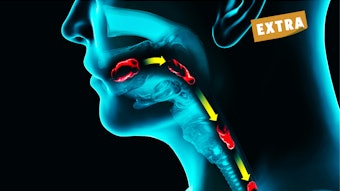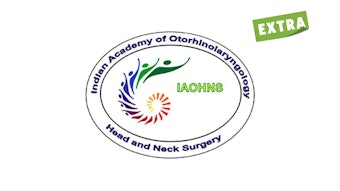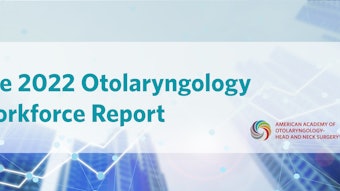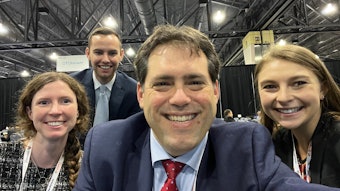The Otolaryngologist’s Role in Primary Care
How do we educate the primary care community about the proper treatment of common otolaryngic childhood and adult illnesses and get them to feel secure in their knowledge and examination skills so that they do not feel compelled to treat?
Robert N. Strominger, MD, General Otolaryngology and Sleep Education Committee member

Picture the following clinical scenarios presenting to your office:
- An otherwise asymptomatic 16-month-old treated with 10 courses of antibiotics over the past year for pulling at his ears with a “red” tympanic membrane
- A 5-year-old on three different antibiotics over a 4-week period (with a total of 20 courses in the past year) for recurrent sinusitis, most of which have been treated within a few days of the onset of symptoms
- Adults on multiple courses of antibiotics for chronic or recurrent ear pain, recurrent headaches without other symptoms of infection, nasal congestion, and rhinitis
Across the country, these scenarios are illustrative of a typical day of clinic patients for otolaryngologists. Significant time is spent explaining to parents why children should not be given antibiotics for pulling at their ears or for a red tympanic membrane because most tonsillitis, ear infections, and upper respiratory infections are viral and self-limited, and otitis media with effusion does require antibiotics. In both adults and children, daily discussions include that cerumen is normal, that antibiotics are only necessary for sinusitis if symptoms do not resolve on their own, that recurrent headaches are more likely migraines than sinusitis, that tonsils should only be removed if Paradise criteria are met, and that obesity can contribute to both sleep-disordered breathing and obstructive sleep apnea.
A 2017 study revealed that of medical schools surveyed 89% of schools offered otolaryngology as a clinical elective rotation, with a mean of 12 students participating yearly. Only 7% of schools required a mandatory otolaryngology clinical rotation. Another study on the assessment of otolaryngic knowledge in primary care residents showed that only 24% of the non-otolaryngology residents had an otolaryngology rotation during medical school. The same amount (24%) had a rotation during residency. Only 18% of non-otolaryngology residents identified the endoscopic image of the inferior turbinate correctly.
National guidelines published by the Infectious Diseases Society of America (IDSA) recommend against routine group A strep (GAS) testing in children less than three years of age unless there is a close family contact with GAS, because both infection with GAS and adverse sequela if infected are rare in this age group. Yet testing and treatment in this age group are performed routinely. Regarding the diagnosis and treatment of adult sinusitis, roughly 80% of migraines are first diagnosed and treated as sinusitis. The AAO-HNSF has published clinical practice guidelines for tonsillectomy in children, otitis media with effusion, and tympanostomy tubes in children that many primary and urgent care providers don’t know about. Common clinical resources like UpToDate have incorporated these guidelines into their treatment algorithms. What is our role in this public health crisis as otolaryngologists? How do we educate the primary care community, especially urgent care providers and advanced practice providers, about the proper treatment of common otolaryngic childhood and adult illnesses and get them to feel secure in their knowledge and examination skills so that they do not feel compelled to treat?
First and foremost, we need to get otolaryngology incorporated into all levels of medical education, including in medical, physician assistant, and nurse practitioner programs, and in postgraduate, non-otolaryngology primary care. This is especially a necessity for physician assistant and nurse practitioner education. Within a given hospital system, an otolaryngology rotation could be included during the onboarding process. Another avenue is using an antimicrobial stewardship team. The Joint Commission and Centers for Medicare & Medicaid Services require inpatient stewardship but not ambulatory. The Centers for Disease Control and Prevention has recognized this problem and has made grant money available. Money has been released to every state for work on ambulatory IDSA stewardship. This is a one-time “sharp grant” to try to jump-start ambulatory stewardship. The Agency for Healthcare Research and Quality (AHRQ) Safety Program for Improving Antibiotic Use has an ambulatory tool kit to improve antibiotic use in ambulatory care. One study looking at 389 practices that implemented the AHRQ Safety Program found that total antibiotic prescribing fell significantly, declining by nine prescriptions per 100 visits, and acute respiratory infection-related antibiotic prescriptions decreased by 15 per 100 visits.
The most important efforts are likely making personal connections, be it by visiting primary care offices or having lunch or dinner with a referring colleague. Even when working as a surgical subspecialist in the digital world, we all bear the burden of public health and medical education.
References
Al-Hashel JY, Ahmed SF, Alroughani R, Goadsby PJ. Migraine misdiagnosis as a sinusitis, a delay that can last for many years. J Headache Pain. 2013;14:97. doi:10.1186/1129-2377-14-97
Boscoe EF, Cabrera-Muffly C. Otolaryngology in the medical school curriculum: Current trends in the United States. Laryngoscope. 2017 Feb;127(2):346-348. doi: 10.1002/lary.26099. Epub 2016 Jun 14. PMID: 27296300.
Centers for Disease Control and Prevention. Group A Streptococcal (GAS) disease. Accessed November 1, 2016. https://www.cdc.gov/groupastrep/diseases-hcp/strep-throat.html.
Error ME, Wilson KF, Ward PD, Gale DC, Meier JD. Assessment of otolaryngic knowledge in primary care residents. Otolaryngol Head Neck Surg. 2013 Mar;148(3):420-424. doi: 10.1177/0194599812472314. Epub 2013 Jan 9. PMID: 23302149.
Keller SC, Caballero TM, Tamma P, et al.161. The Agency for Healthcare Research and Quality (AHRQ) Safety Program for Improving Antibiotic Use: Antibiotic Stewardship Intervention in 389 United States Ambulatory Practices during the COVID-19 Pandemic. Open Forum Infect Dis. 2021 Dec 4;8(Suppl 1):S97. doi: 10.1093/ofid/ofab466.161. PMCID: PMC8644525.
McDonnell L, Gilkes A, Ashworth M. Association between antibiotics and gut microbiome dysbiosis in children: systematic review and meta-analysis. Gut Microbes. 2021;13(1):1-18. doi: 10.1080/19490976.2020.1870402
Patangia DV, Ryan CA, Dempsey, E, Ross RP, Stanton C. Impact of antibiotics on the human microbiome and consequences for host health. Microbiologyopen. 2022;11:e1260. doi: 10.1002/mbo3.1260





















